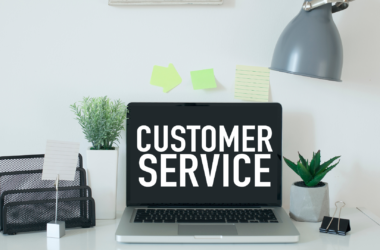Discover More About Customer Service Platforms
Customer service platforms are becoming increasingly popular among businesses of all sizes, as they provide support agents with a powerful tool to manage customer interactions. Using a customer service platform, a business can quickly and easily access customer data, prioritize inquiries, and respond effectively to queries. By leveraging the benefits of this type of solution, companies can ensure that those who buy from them receive the highest level of satisfaction possible. After defining this type of platform, we’ll look to explore some of their key benefits as well as any disadvantages of using them so that you can decide whether they are suitable for your organization’s needs. Benefits of Customer Service Platforms There are plenty of benefits attached to using a customer service platform. This is why so many businesses are contemplating them to handle high volumes of customers that all need to be satisfied enough to place a first order and then order again. So these benefits include: Increased customer satisfaction and loyalty by providing quick and effective support services. Automated customer support tasks, such as routing inquiries to the correct department or responding based on data. Reduced costs associated with customer service operations because of improved efficiency. Improved customer engagement and relationships by providing a platform for feedback. A streamlined service experience with the use of customer relationship management (CRM) tools. Disadvantages of Customer Service Platforms Like any technology, customer service platforms have disadvantages that should be taken into consideration when deciding whether to implement them into your operations. We only have to study those who use them at the moment within our sector to know how useful they are proving. Potential disadvantages include: Requires a significant investment in terms of time and money to implement customer service platforms. Although, having said that automation can be cost-effective compared to a more manual approach. Potential barriers to customer satisfaction may be created as customer support agents may not be able to provide personalized support when using service platforms. It all depends on how much the IT solution can be tailored to your business’s specific requirements, which, in many cases, is possible when we call upon the experts. The risk is that customer data stored within the customer service platform is not secure or encrypted properly. There are various ways of securing data, however. We can achieve it through software solutions, encryption, and strong passwords. By strong passwords, we mean not predictable, of a reasonable length, and made up of a mixture of letters, numbers, and symbols. The possibility of increased confusion if customer service platforms lack the necessary tools to provide agents with customer context. This is a case of choosing the right one to suit the needs of the business and its customers. Training can be provided for employees but customers may look elsewhere if the automated procedure proves too complicated. Conclusion Customer service platforms can be extremely beneficial for businesses of all sizes, but it’s important to weigh up the pros and cons before introducing such a platform into your customer service operations. Ensuring that you choose the right platform with the necessary customer service tools will help to ensure satisfaction, loyalty, and engagement. It pays to do your research in this area and consult business associates who have used similar systems. For businesses looking to streamline their services, it is important to consider a more automated way of communicating with customers regularly. So, if you’re looking for a customer service platform to help improve the way you support customers before, during, and after a sale, consider all of the above carefully because it can mean the difference between competing on a level playing field or the equivalent of struggling up a hill when we have failed to adopt the technology needed to effectively engage with our customers.











